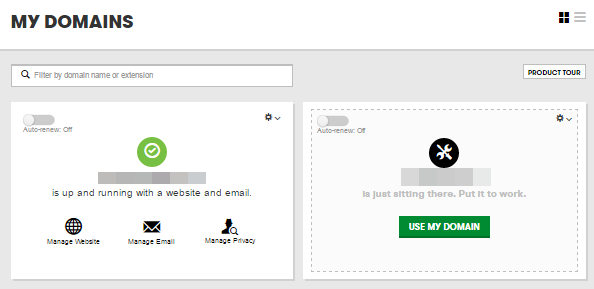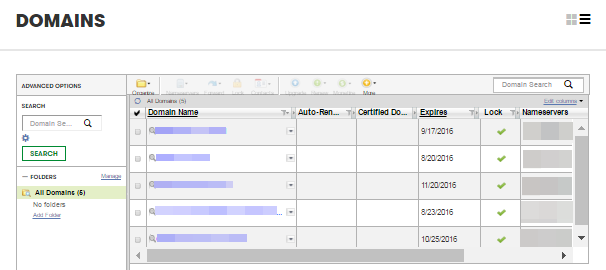During the domain name validation process, we verify the email address used when the domain is registered with us. The process also includes fraud screening and telephone verification. If you follow the proper procedures, we can generally process a Certified Domain name request within minutes of submission. Failure to complete a step will prevent the process from moving on to the next step and all procedures must be completed to certify the domain name.
If you have private registration on your domain’s contact information, you can still complete the verification process. You can access your private registration information through the Domain Manager in your account. If you need assistance, please call, send an email or initiate a chat with our customer support center.
We offer full list of top level domains and Country Code Top Level Domains with cheap domainssales.
Generating Verification Emails
When a domain name is submitted for certification, domain name authorization email messages are sent to each unique email address listed for the domain name’s registrant, administrative and technical contacts. Each of these emails must be validated. If only one email address is used for all domain name contacts, only one email is generated. You can re-send any or all of the verification emails at any time until the email verification is complete.
If the domain name’s registration information is not available (for example,certification was requested for a domain name that is being transferred to us but not yet active in one of our accounts, or certification was requested for a backordered domain name that is not currently registered through us) this verification step will remain open until the registration information becomes available. At that time, verification emails will be sent to the domain name’s contacts.
Verifying the Domain Name’s Contacts
The domain name contacts — the domain name’s registrant, administrative and technical contacts — verify receipt of the Certified Domain name email. Once all email addresses are validated, the request proceeds to the next step. The process will not continue until each unique email address has been validated.
If you are having problems receiving the verification emails, please be certain you’re using the same email used when the domain was registered. You may also want to check your spam or bulk folders to ensure the email is not being redirected.
Fraud Screening
The Certified Domain name screens the domain name for a number of possible fraud indicators. If initial screening indicates possible fraud, a more meticulous fraud review is applied to the domain. If your domain is identified as needing further review, the verification process can be delayed by up to 48 hours. If, during secondary screening, we determine there is sufficient reason to suspect fraud, we reject the Certified Domain name request. If we don’t detect any problems, we clear the domain name and the Certified Domain name authorization and validation process proceeds.
If your domain is denied due to fraud, call our support line, send an email or send a chat notification to one of our agents for assistance. We can help identify the problem and get you on your way again.
Telephone Verification
Phone verification is required for all Certified Domain name holders to complete their authorization and validation process. At your request, we send an SMS (text message) with a PIN to the phone number you provide. You must enter this PIN correctly in order for us to complete the validation process and issue the Domain Origination Certified Seal.
You are limited to attempting telephone verification three (3) times per day and a total of nine (9) attempts per domain.
Issuing the Certification
When the authorization and validation process is complete, the Domain Origination Certified seal is issued. In addition, a computer-generated Domain Origination Certified Seal is added to the Whois listing for the domain name in question.




